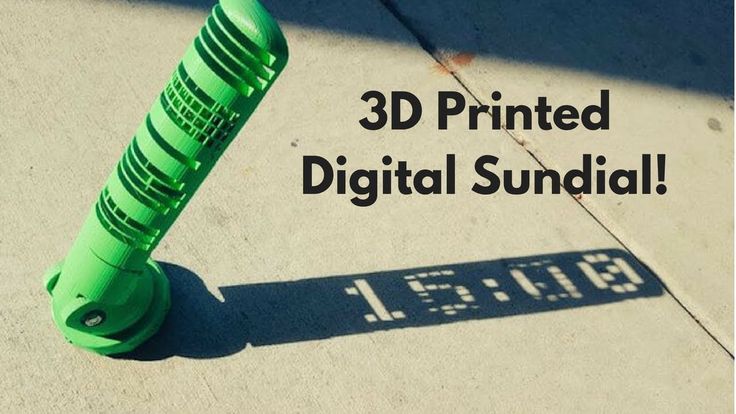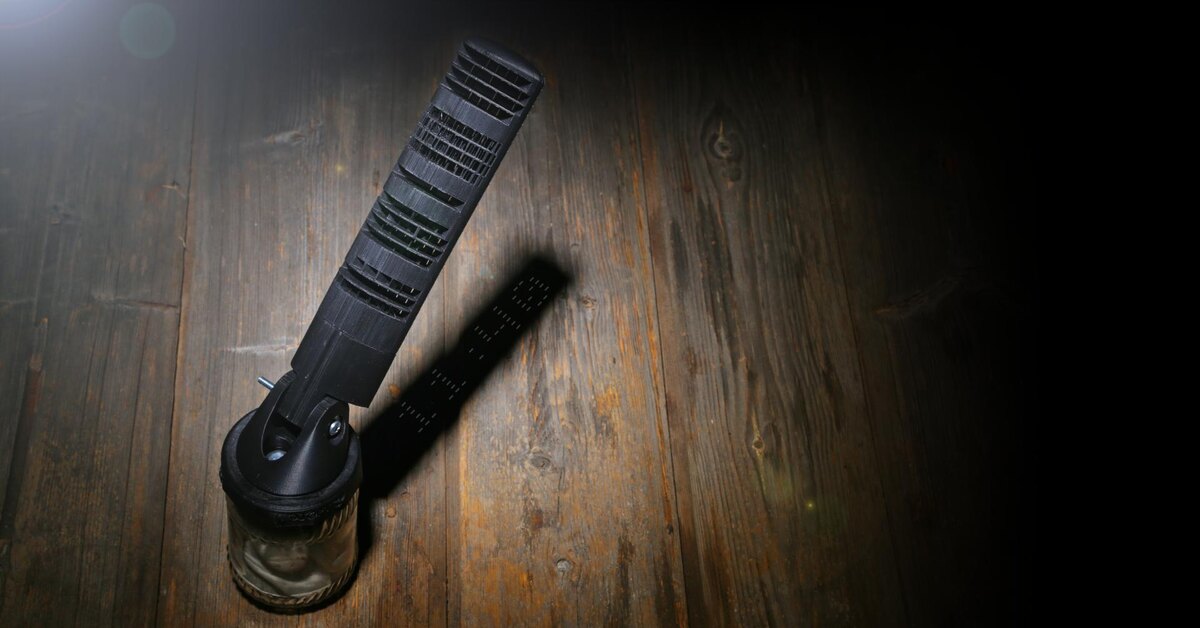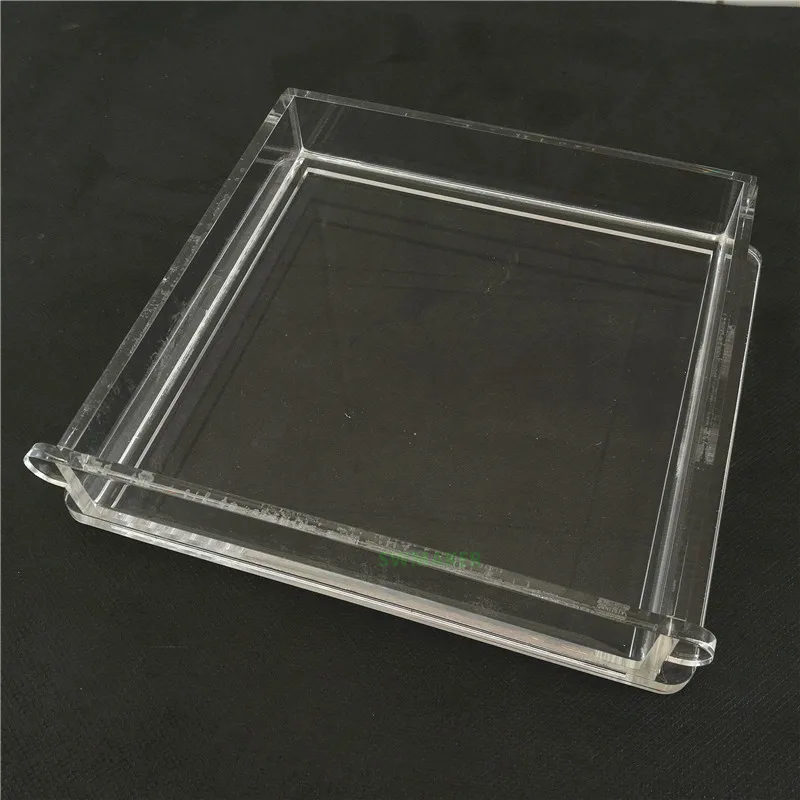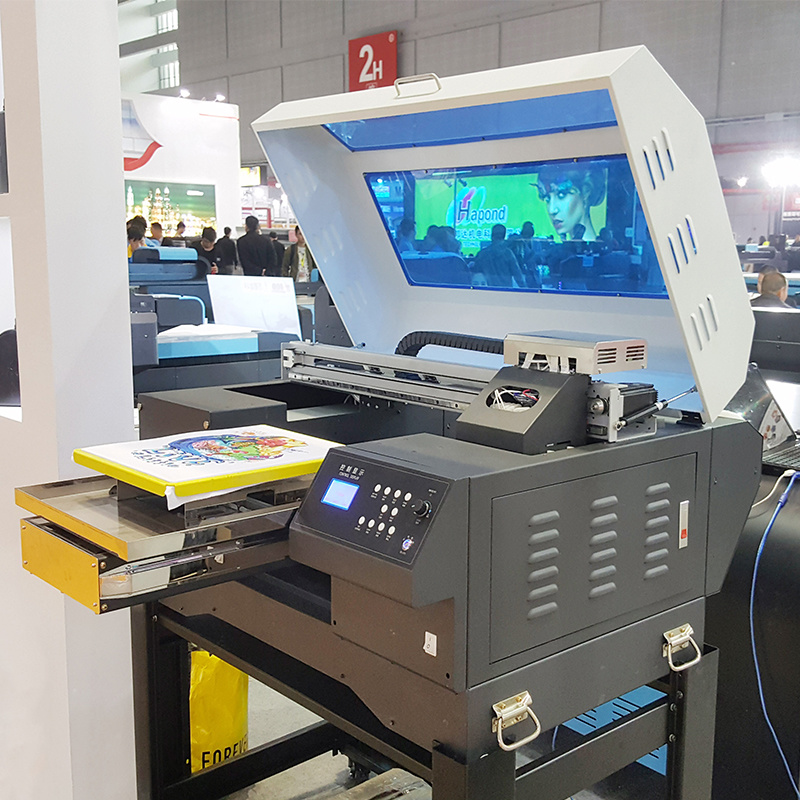3D printed sundial displays the time digitally
3D-Printed Sundial Displays Time Like A Digital Clock
How many times have you stuck a stick in the ground to use as a sundial, only to realize that you still have no idea what time it is? French Etsy shop Mojoptix has solved the problem that was the Curse of Rome by 3D-printing special sundials that display the time “digitally”-if it’s between 10:00 and 16:00, that is, and you don’t mind the time being displayed in 20 minute increments!
“No batteries, no motor, no electronics… It’s all just a really super-fancy shadow show,” writes Mojoptix. “The shape of the sundial has been mathematically designed to only let through the right sunrays at the right time/angle…You can precisely adjust the displayed time simply by rotating the gnomon, so you can even adjust for Daylight Saving Time.”
Have your own 3d-printer? Get the plans and print your own sundial! See the Thingverse link below.
More info: Etsy | Thingverse (h/t: mymodernmet)
“No batteries, no motor, no electronics…”
“It’s all just a really super-fancy shadow show”
“The shape of the sundial has been mathematically designed to only let through the right sunrays at the right time/angle”
“You can precisely adjust the displayed time simply by rotating the gnomon”
These 3d-printed parts are all you need
It takes 35 hours of 3d-printing time to manufacture each sundial
Time is displayed in 20 minute increments, from 10:00 to 16:00
Listen to the designer explain how it works here:
Get your own sundial here here!
An Open Source 3D Printed Sundial That Reads Digital Time - 3DPrint.com
Do you remember the first time you grasped the concept of a sundial, the idea that we can tell general time from observing the shadow cast by the sun via an object designed for this purpose? It seemed like a pretty magical concept, and it also introduces basic concepts about math and astronomy in an interesting and beneficial way.![]()
It was Ancient Egyptian and Babylonian astronomy that gave us the first sundials, and since then they have been used as serious objects of mathematical study and as decorative objects because they represent technology of the past that was streamlined over time. Sundials are rather simple instruments at first glance. Using just a few parts, the trick is to get the edge (style) of the part that throws the shadow (gnomon) to be parallel to the Earth’s rotation axis while staying accurate all year long. For the Southern hemisphere, the latitude has to be reversed from the Northern hemisphere’s latitude. Now, add 3D printing to make a digital sundial for the Southern hemisphere and that might get your attention, right?
That’s right. Julldozer of Mojoptix set out to 3D print a sundial with the question: “What if we had a sundial that worked more like some sort of enormous digital watch?” And what he means by this is that as the style on the sundial moves, sun is either blocked or it breaks through the design holes (he calls it “swiss cheese”) so that the actual time can be read in the shadow of the sundial.
Wow. And I thought I had heard it all. It’s kind of like, why stop at approximating the correct time with a sundial when you can straight out just have the exact digital time displayed? Modern enough for you yet?
In a YouTube video (see below) that explains how Julldozer conceptualized and designed the project, he tells us he built the sundial algorhythmically using OpenSCAD. He created a matrix for each number shown on the sundial. Then he combined these number matrixes into an open-source 3D printable model with OpenSCAD script and STL files. The whole project is open source, and you can download everything on Thingiverse (or just buy it from his Etsy shop). All you’ll need are four 3D printed parts (ABS, he notes), as well as a jam jar and a few screws, nuts, and washers.
As Julldozer describes, 3D printing proves to be essential in the project because the elaborate algorhythmically designed holes — the “swiss cheese”– can’t be made any other way like injection molding or another mass production method. This makes sense since the design using sunlight cast through holes to show legible numbers is quite an elaborate undertaking.
This makes sense since the design using sunlight cast through holes to show legible numbers is quite an elaborate undertaking.
We are used to hearing that “3D printing is the only way,” and this is another one of those projects. It’s an incredible example of some unthinkably modern ways to retain technologies of the past. Once you understand where to point the tip of the sundial (North or South?), the rest of the project seems accessible, as Julldozer of Mojoptix has done most of the hard work already for the rest of us. Let us know your thoughts on this design in the 3D Printed Sundial forum thread on 3DPB.com.
Stay up-to-date on all the latest news from the 3D printing industry and receive information and offers from third party vendors.
Tagged with: 3d printed clock • 3d printed clocks • 3d printed sundial • france • Julldozer • Mojoptix • OpenSCAD • sundial • thingiverse • time telling
Please enable JavaScript to view the comments powered by Disqus.
3D printed digital sundial (video)
Read Ukrainian
The clock creates shadows showing the current time as a set of numbers. They only display the time span from 10 am to 4 pm with an interval of 20 minutes
The first mention of a sundial appeared in ancient Egypt. They were created when a person realized a clear relationship between the length and position of the sun's shadows, as well as the position of the luminary in the sky. The first model of a sundial outwardly resembled an ordinary bar. Divisions were applied to it, which measured the length of the shadow.
Subscribe to our Viber: news, humor and entertainment!
Subscribe Then came the era of round clocks. A rod - a gnomon - was installed in their center. He cast a shadow. One inventor wondered if a sundial could be crossed with a digital one. The most interesting thing is that he succeeded.
But the word "digital" means only the stylization of such watches as an electronic device. A French inventor designed and 3D printed a sundial. They create shadows depicting the current time as a set of numbers. For this effect, he made hundreds of different holes in the gnomon. The clock, depending on the position of the Sun in the sky, casts its own unique shadow. From the outside, it really looks very original.
See also: New 3D printer uses paper to print (video)
But the watch also has tangible drawbacks. Due to their unusual design, they only display the time interval from 10:00 to 16:00 with an interval of 20 minutes. But this did not stop the developer from putting his watch up for sale. The price for them is 107 Canadian dollars. In total, two colors are available - black and blue, as well as two versions of watches designed for residents of the northern and southern hemispheres.
Popular articles now
When the Third World War begins, the interpretation of the prophecies of Nostradamus and Vanga: "It will last 27 years" "Former" Zalivako Alla Pavlovna told how girls are bullied at "The Bachelor", Reshetnik is the most: "Grisha fuck" Mom Nadia Dorofeeva decided to talk about abortion: "It's good that it's not . .." Who will be the next president after Vladimir Zelensky: the tarologist saw a woman, but there is a nuance
.." Who will be the next president after Vladimir Zelensky: the tarologist saw a woman, but there is a nuance
Show more
Subscribe to our Viber: news, humor and entertainment!
SubscribeFeatured News
Russian aggression forced to take a desperate step: Poland plans to create the strongest army on the continent
The real voice of Polina Gagarina and ViaGra: Vanya Russell showed what happens when you turn off the soundtrack
Hiroshima and Nagasaki: Putin made a terrible hint of a nuclear strike
Stockpiling but Not Panic: How Much Consumer Prices Will Rise in 2023
They change so that the guy makes noise: 5 male names that lovers of the "leftist" wear
They won’t pat on the head: what shines for debtors for a communal apartment
The dollar exchange rate will change, no longer 50 UAH: what "surprises" to expect from exchangers next year
What color of polish will be in fashion in winter 2022/23: the latest manicure ideas from sparkling black to chrome
Don't even try to get rich: 6 female and male names that bring poverty
Horoscope for the week of November 7-13 for all signs of the Zodiac: Taurus is on the verge, Virgo will start to get sick, and Scorpios are the favorites of fate
The star of the "Women's Quarter" Tanya Pesik almost eclipsed the first lady, flashing her legs in a new image: "What a madam"
When the Third World War begins, interpretations of the prophecies of Nostradamus and Vanga: "It will last 27 years"
"Former" Zalivako Alla Pavlovna told how girls are bullied at "The Bachelor", Reshetnik is the most: "Grisha fuck"
Alex Topolsky threw out a gift, and the editors intimidated with fines: Adelina Delhi gave out more truths about the Bachelor show0039
Nadia Dorofeeva's mother decided to tell about the abortion: "It's good that it's not. .."
.."
Katya Osadchaya found out who was courting Tina Karol after Evgeny Ogir and Dan Balan: "I looked very much..."
Salt and sugar started selling at updated prices: what amounts Ukrainians will see in their receipts
How to make an "eternal" flashlight when there is no light: even a child can do it
The Pension Fund named the category of Ukrainians who can say goodbye to pensions
Who will be the next president after Vladimir Zelensky: the tarologist saw a woman, but there is a nuance
Read more
3D printed sundial: download and print
Sundial 3D printed sundial shows the time in numbers.
Roman Fishman
Man is such a strange creature, something always does not suit him. He strives to improve everything. Wheel - it would seem, what else? But even here there are endless modifications, including even non-circular ones. Oddly enough, this perseverance pays off. Mechanisms and devices, perfected over the centuries, suddenly begin to work easier and faster. Perhaps this is the person: a biped without feathers, with nails - and with an irresistible desire to turn everything in his hands with one thought: "What could be improved here"? ..
Mechanisms and devices, perfected over the centuries, suddenly begin to work easier and faster. Perhaps this is the person: a biped without feathers, with nails - and with an irresistible desire to turn everything in his hands with one thought: "What could be improved here"? ..
Since one said to the other, "I'll meet you when the shadow of the tree reaches that stone," the design of the sundial has changed little. Until now, these are only two parts: a frame (a plane with hour divisions) and a gnomon rod that casts a shadow. It is immediately clear that there is simply nothing to improve. But the human passion for everything new, curiosity and experimentation, perfectly supported by our entire evolution and even the physiology of the brain, worked this time as well. French developers from the Mojoptix group came up with a completely new scheme: their Sundial sundial shows the time in numbers.
By and large, no one knows how this device works, but the reasoning of the inventors is quite simple. It is enough to break the numbers into dots, as in a postal code. Each point can be formed by a sunbeam passing through its hole in the gnomon. Each specific moment of time corresponds to a specific position of the Sun in the sky - and the same pre-calculated set of holes. In order not to complicate the task, let's take the time step of our clock, say, 20 minutes. In addition, you can exclude night, too early and late hours, limiting yourself to the time from 10:00 to 16:00.
It is enough to break the numbers into dots, as in a postal code. Each point can be formed by a sunbeam passing through its hole in the gnomon. Each specific moment of time corresponds to a specific position of the Sun in the sky - and the same pre-calculated set of holes. In order not to complicate the task, let's take the time step of our clock, say, 20 minutes. In addition, you can exclude night, too early and late hours, limiting yourself to the time from 10:00 to 16:00.
It remains to formulate this problem mathematically and “feed” it to a suitable 3D modeling computer system, which was done in Mojoptix, having received a ready-made gnomon model (in the form of a half-cylinder) with a set of slots. It is clear that at different latitudes the Sun rises to different heights at the same time, so our digital sundial will need a system to adjust the angle of inclination. In order not to bother with modeling on your own, you can find ready-made files in the Thingverse open database: Sundial is available for free use.












